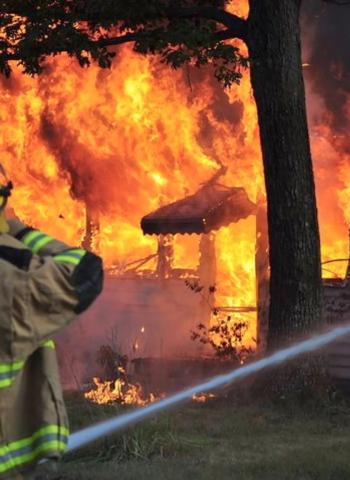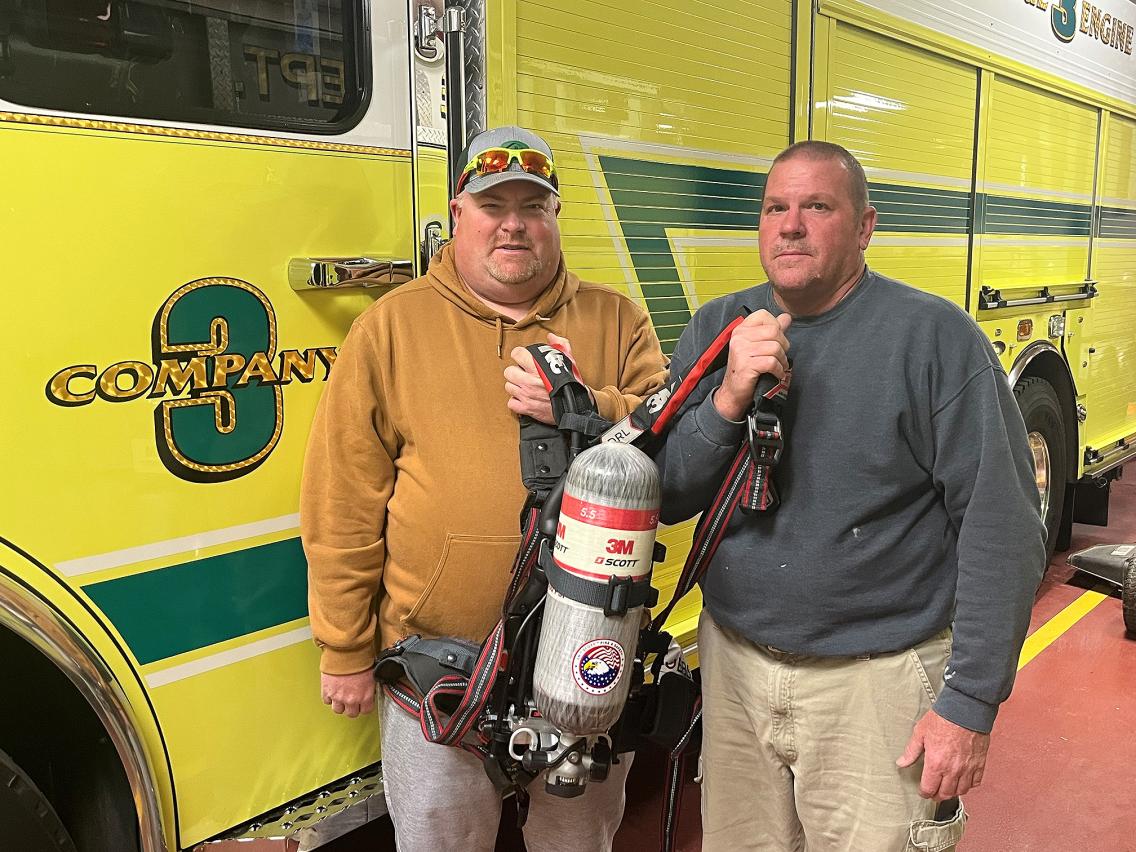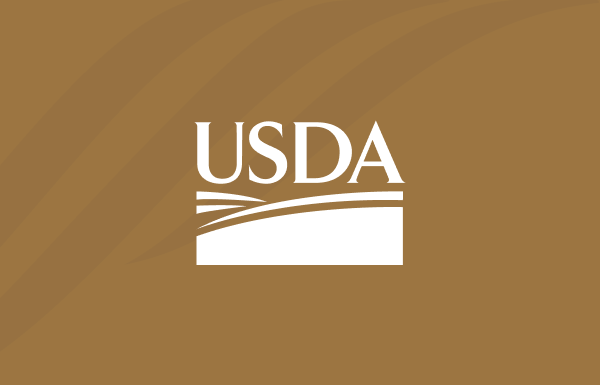
Danger may be part of the job description for firefighters, but one critical piece of protective gear can significantly lower health risks for those who put themselves in harm’s way to protect lives and property in rural Virginia.
“We consider every environment to be hazardous until the threat is contained,” says Chief Todd Padgett of the Cople District Volunteer Fire Department (VFD). “Air packs aren’t just used for house or structure fires. We wear them for hazmat incidents and outdoors on farms to safely operate in these areas.
“Almost every piece of equipment we have, minus our fire boat, is carrying some sort of air pack for every seat and for the driver as well. That way, we don’t encounter a situation where we have the apparatus on scene to put water on the fire, but our guys don’t have the proper safety equipment for the call.”
The department operates one station in Kinsale and another in Coles Point to provide fire and emergency medical services to about 3,500 residents in its immediate response area. This volunteer team also supports surrounding Westmoreland County communities and the adjoining counties of Northumberland and Richmond through mutual aid agreements.

“We don't average a lot of structure fires a year in our department but, with mutual aid, we have responded to quite a few of them,” said Padgett. “We see a lot of combine or field fires too with the different seasons of the farming operations.”
When Tropical Storm Michael passed through the area in October 2016, the low-income community experienced significant wind and water damage. Residents united as they had so many times before to recover and rebuild, and USDA Rural Development came alongside them as part of the support team.
Area Specialist Tara Delaney (now retired) worked closely with Kinsale Museum Director Lynn Norris and the Cople VFD to secure a $100,000 Community Facility Disaster Grant to purchase replacement Self-Contained Breathing Apparatus (SCBA) that will position the roughly 35 active firefighters to safely respond to current and future emergencies.
“As she was leaving, Tara made sure that we knew about this grant and did something about it,” said Norris. “She was tenacious in her efforts to help us and didn't just throw us overboard to the alligators. She would call and say, ‘We haven't received so and so yet.’ Sometimes, someone had tried to respond, but our internet is so poor here that the response was stuck in an outbox.”
“The Kinsale Foundation actually played two pivotal roles,” added Tommy Hicks, a longtime Cople VFD member. “Bringing us together to submit the application and raising donations to help cover the in-kind match of $82,000 that was part of the project.
"The foundation was able to provide part of that funding, which in essence helped pay for some of the packs. So, it was really a win-win with community engagement to get to the threshold needed for the grant award.”
That engagement is key to the success of volunteer departments like Cople, which celebrates its 75th anniversary this year. Three of the firefighters are farmers. Some work in the local lumber plant and several are contractors. Padgett says daytime operations are possible because some of its most active members are self-employed or work for companies that are willing to let them take off for calls.
“This community may be poor, but we're rich in love,” said Norris. “When a trailer burns and the people lose everything, neighbors scramble to help. That recently happened to three people in about a six-week period. Longstanding fire auxiliaries (including Cople's and that of the Westmoreland VFD in Montross) also key in on outreach.”

“With our winding back roads, they have to travel so far and only have a certain number of places where they can refill for water,” explained Norris. “It's crucial to have more trucks that can get there with enough water to fight the fire.”
The department’ s fire boat also comes in handy for responses involving waterfront businesses and houses that aren't easily reachable by hose. Padgett says his crew is available to assist with fires and missing boater calls on the Potomac River and that Maryland vessels have helped provide the water supply for Virginia incidents through a mutual aid agreement with St. Mary’s County.
In the volunteer world, each team member plays a vital role in supporting the mission. Those who don’t want to fight fires can plug in to perform different tasks. The same is true with USDA RD’s partnership with rural departments like Cople to ensure that critical public safety services are available in the commonwealth’s smallest communities.
“It’s just been an absolute pleasure and joy to work with RD and the entire team over there to support the local fire department,” said Hicks. “A lot of times, our state and federal agencies do great work that isn’t often recognized.”
Moving forward, Padgett is keeping an eye on turnout gear expiration dates to remain compliant with National Fire Protection Association standards while also working to keep vehicles and other apparatus within a 20-year service window.
“We have 12 trucks now and one tanker is a 1987 model that will need to be replaced,” said Padgett. “We’re also trying to install a kitchen at this station so we can better serve the community during emergencies like hurricanes and tropical storms.”
“In this very old town, we are privileged to work together,” adds Norris. “Our firefighters are focused on community and it’s really astounding to see what they are able to accomplish considering the fact that they all do have to work for a living.”


